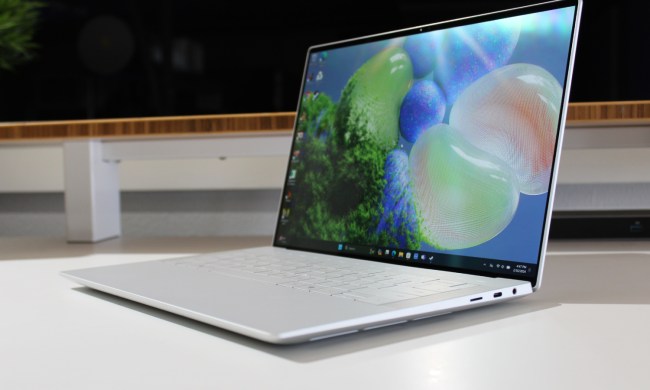The Dell XPS 15 spent several years as the best laptop for creators who want to work on the go. But the Apple MacBook Pro 14 changed all that. Apple’s Silicon chips give it a real edge, even though it is expensive.
Does the XPS 15 have a chance against the relative newcomer?
Specs and configurations
| Apple MacBook Pro 14 | Dell XPS 15 9530 | |
| Dimensions | 12.31 inches x 8.71 inches x 0.60 inches | 13.57 inches x 9.06 inches x 0.71 inches |
| Weight | 3.5 pounds | 4.23 pounds |
| Processor | Apple M3 (8-core) Apple M3 Pro (11-core, 12-core) Apple M2 Max (14-core, 16-core) |
Intel Core i5-13500H Intel Core i7-13700H Intel Core i9-13900H |
| Graphics | M3: 10-core M3 Pro: 14-core, 18-core M3 Max: 30-core, 40-core |
Intel Iris Xe Intel Arc A370M Nvidia GeForce RTX 4050 (40W) Nvidia GeForce RTX 4060 (40W) Nvidia GeForce RTX 4070 (40W) |
| RAM | M3: 8GB to 24GB M3 Pro: 18GB to 128GB M3 Max: 36GB to 128GB |
8GB DDR5-4800MHz 16GB DDR5-4800MHz 32GB DDR5-4800MHz 64GB DDR5-4800MHz |
| Display | 14.2-inch 16:10 Liquid Retina XDR 3024 x 1964 | 15.6-inch 16:10 Full HD+ (1,920 x 1,200) IPS 15.6-inch 16:10 3.5K (3,456 x 2,160) OLED |
| Storage | 512GB SSD 1TB SSD 2TB SSD 4TB SSD 8TB SSD |
512GB PCIe SSD 1TB PCIe SSD 2TB PCIe SSD 4TB PCIe SSD 8TB PCIe SSD (2 x 4TB SSDs) |
| Touch | No | Optional |
| Ports | 3 x USB-C with Thunderbolt 4 1 x HDMI 2.0 1 x 3.5mm audio jack SD card reader |
2 x USB-C with Thunderbolt 4 1 x USB-C 3.2 Gen 2 1 x 3.5mm audio jack 1 x SD Card reader |
| Wireless | Wi-Fi 6E and Bluetooth 5.3 | Wi-Fi 6 and Bluetooth 5.2 |
| Webcam | 1080p | 720p with infrared camera for Windows 11 Hello |
| Operating system | MacOS Monterey | Windows 11 |
| Battery | 70 watt-hour | 86 watt-hours |
| Price | $1,599+ | $1,499+ |
| Rating | 4.5 out of 5 stars | 3.5 out of 5 stars |
The MacBook Pro 14 with the M3 processor starts at $1,599 with 8GB of RAM and a 512GB SSD. You’ll spend $2,599 if you max out the MacBook Pro 14 M3 with 24GB of RAM and a 2TB SSD. The base M3 Pro model costs $1,999, with an increase in RAM from the previous generation to 18GB from 16GB. The storage remains at 512GB.
The more powerful versions are, naturally, more expensive. The Macbook Pro 14 configured with the M3 Pro starts at $1,999 with 16GB of RAM and a 512GB SSD. The most powerful configuration with the M3 Max is a whopping $6,899 with 128GB of RAM and an 8TB SSD.
Dell constantly shuffles configurations and pricing, so you’ll want to check what’s current before making your decision. Right now, the base XPS 15 is $1,199 for a Core i7-13700H, 16GB of RAM, a 512GB SSD, Intel Arc A370M graphics, and a 15.6-inch Full HD+ IPS display. The high-end configuration is $3,749 for a Core i9-13900H, 64GB of RAM, 8TB of storage (two 4TB SSDs), an Nvidia GeForce RTX 4070 GPU, and a 15.6-inch 3.5K OLED display.
Both laptops are very premium at the high end, although the MacBook Pro is almost twice as expensive. The Dell also has a lower entry-level configuration.
Design
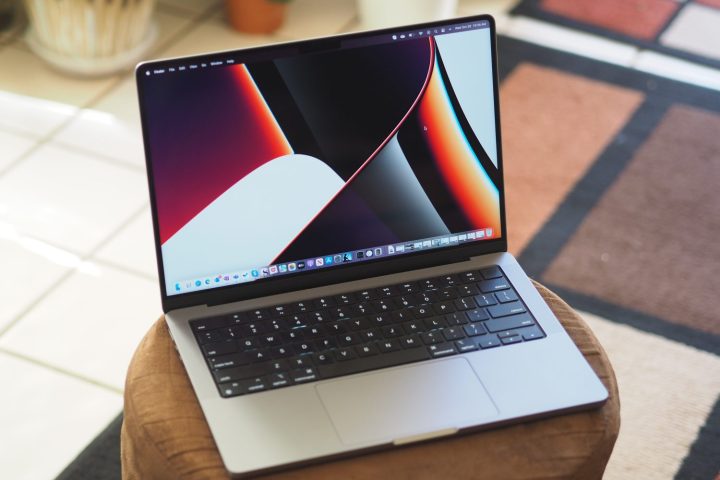
Neither laptop has received any design changes in several generations. That’s a good thing, because both are among the best designed and built laptops available today.
The MacBook Pro 14 retains the line’s new aesthetic that’s extremely minimalist and yet incredibly elegant. It’s a boxy shape with zero tapers anywhere, and being constructed from CNC-milled aluminum gives it an incredibly solid feel. It’s available in Silver, Space Gray, and a new Space Black. The XPS 15 has a little more flair, with a silver aluminum outer shell and a black carbon fiber palm rest, with a sweeping angle from front to back. It’s also incredibly solid and exudes quality. Which is the better laptop in terms of looks and feel comes down to personal preference.
On the other hand, the MacBook Pro 14 has the best laptop keyboard — and it’s not very close. The Magic Keyboard has perfectly sized keycaps and just the right key spacing, with switches that are shallow, but still crisp and precise. The XPS 15’s keyboard is also very good, with a highly functional layout and switches that are a bit deeper while also offering a precise feel. Even so, the MacBook Pro 14 wins out. The difference is even more pronounced with the touchpads. The MacBook Pro 14 has Apple’s excellent Force Touch haptic touchpad, which is large and enables clicking and tapping on its entire surface. The XPS 15’s mechanical touchpad is as good, with a responsive surface and quiet, confident clicks. Again, the XPS 15 is very good here, but the MacBook Pro 14 is simply better. The Dell’s display is touch-enabled while the Apple’s is not, which is a plus for some users.
The MacBook Pro 14 also has better connectivity, with both more Thunderbolt 4 ports and an HDMI connection. Both laptops have full-size SD card readers, which is welcome. The XPS 15’s wireless connectivity is a generation behind, giving the MacBook Pro 14 another win.
Finally, the XPS 15’s webcam is just a 720p version, which can’t provide nearly the same image quality as the MacBook Pro 14’s 1080p version. Both laptops offer fingerprint readers embedded in the power button, while the XPS 15 also has an infrared camera for Windows 11 Hello facial recognition.
Performance
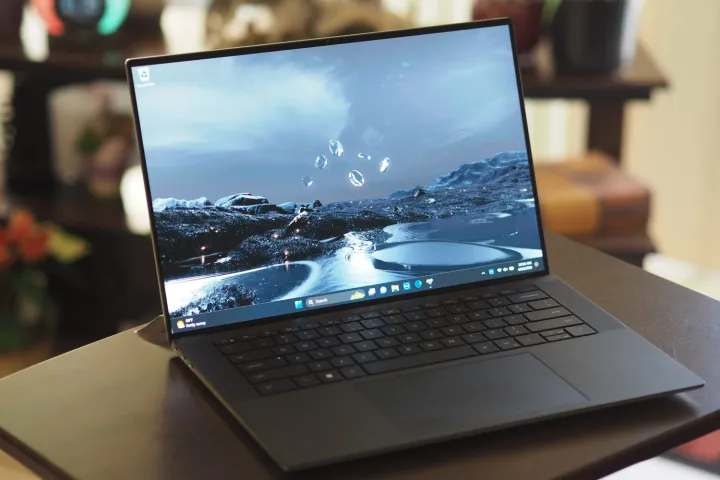
We tested the MacBook Pro 14 with the fastest CPU available, the M3 Max with 16 CPU cores and 40 GPU cores. That’s a monster chip that has achieved some of the fastest benchmark results we’ve seen. As you’ll see here, the XPS 15 configured with the Core i7-13700H can’t keep up in CPU-intensive benchmarks. It was only competitive in the Cinebench R23 benchmark in single-core mode. When all cores are engaged, the MacBook Pro 14 is much faster.
We didn’t test the MacBook Pro 14 in the same version of the PugetBench Premiere Pro benchmark, and so we can’t directly compare numbers. However, in this benchmark that runs in a live version of Adobe’s Premiere Pro and uses the GPU to speed up certain tasks, the MacBook Pro 14 with the M3 Max achieved the second-highest score we’ve seen in a laptop. Only the Asus ROG Strix Scar 17 with an AMD Ryzen 9 7945HX3D and an RTX 4090 was faster. The XPS 15, even in its most powerful configuration, won’t come close to matching the MacBook Pro 14.
The XPS 15 is completely outclassed by the MacBook Pro 14 with the M3 Max. While the Dell is fast enough for demanding productivity tasks and can handle moderate creative workflows, the MacBook Pro 14 will be considerably faster in every task you throw at it. We haven’t yet benchmarked the MacBook Pro 14 in games, but for those that are cross-platform, Apple’s machine will likely even be a better gaming laptop.
| Geekbench (single/multi) |
Handbrake (seconds) |
Cinebench R23 (single/multi) |
|
| MacBook Pro 14 M3 (M3 Max 16/40) |
Bal: 3174/ 21137 Perf: N/A |
Bal: 53 Perf: N/A |
Bal: 1881/ 22,028 Perf: N/A |
| Dell XPS 15 (Core i7-13700H / RTX 4070) |
Bal: 1787 / 11,978 Perf: 1830 / 11769 |
Bal: 79 Perf: 76 |
Bal: 1865 / 13386 Perf: 1868 / 13927 |
Display
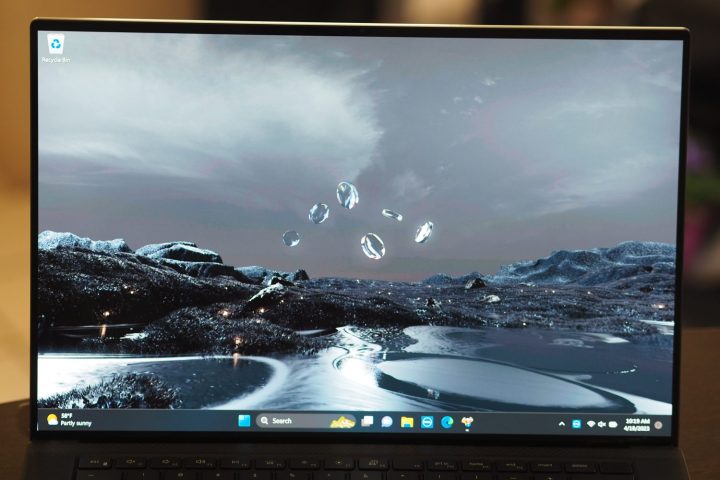
The MacBook Pro 14 has a 14.2-inch 16:10 Mini-LED display running at 3024 x 1964 and up to 120Hz. That’s up against the XPS 15’s 15.6-inch 16:10 OLED panel with a 3,456 x 2,160 resolution and 60Hz maximum refresh rate. Both displays look great subjectively, with dynamic color and inky blacks.
The MacBook Pro 14’s Mini-LED display is much brighter, both in its default standard dynamic range (SDR) setting and when running high dynamic range (HDR) content. Add in its incredibly deep contrast and a maximum brightness of 1,600 nits and the MacBook Pro is the best laptop for HDR streaming. Where the XPS 15’s OLED display is better is in its coverage of the AdobeRGB gamut. But Apple’s display is slightly more accurate.
Overall, while nobody will complain about the XPS 15’s display, the MacBook Pro 14’s is better yet. All kinds of users, including productivity workers, creators, and media consumers, will love it.
| Dell XPS 15 (OLED) |
Apple MacBook Pro 14 (Mini-LED) |
|
| Brightness (nits) |
358 | 511 |
| AdobeRGB gamut | 96% | 89% |
| sRGB gamut | 100% | 100% |
| Accuracy (DeltaE, lower is better) |
1.31 | 1.13 |
| Contrast ratio | 24,850:1 | 35,450:1 |
The XPS 15 has the best audio quality in a Windows laptop, with quad speakers pumping out plenty of volume with clear mids and highs. But the MacBook Pro 14 has six speakers, including force-canceling woofers, and it puts out incredibly full sound with tons of bass. Again, the MacBook Pro 14 is better than the XPS 15.
Portability
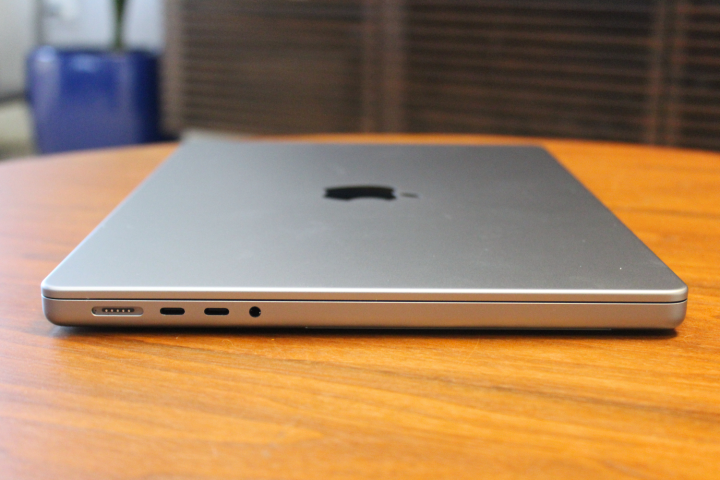
Due to its 15.6-inch display, even with its incredibly thin bezels (thinner than the MacBook Pro 14’s), the XPS 15 is wider and deeper. It’s also thicker at 0.70 inches versus 0.61 inches and heavier at 4.23 pounds versus 3.5 pounds. The MacBook Pro 14 is the more portable laptop.
But where the MacBook Pro 14 really shines is in battery life. While the XPS 15 will struggle to hit eight hours of on-screen time, the MacBook Pro 14 can make it to 18 hours depending on the task. If you need a laptop that will make it through not just one working day, but well into the second, then the MacBook Pro 14 wins out.
The MacBook Pro 14 is in another class
Yes, the MacBook Pro 14 is more expensive than the XPS 15, especially when fully configured. But the laptop has turned into the best portable creator’s workstation you can buy today.
Against most other laptops, the XPS 15 might come out on top. But it’s simply outclassed by the MacBook Pro 14 in performance, battery life, keyboard and touchpad, and overall display quality.

